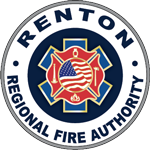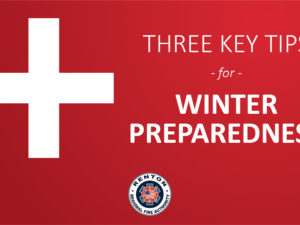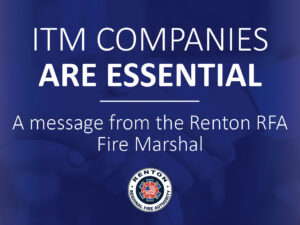Halloween can be a real treat. The trick is to make sure Halloween is both fun and safe! October is Fire prevention Month and we want to remind the Renton community to be aware of festive decorations like glowing jack-o-lanterns, paper ghosts, and dried cornstalks. These classic hallmarks of Halloween can present lurking fire risks that have the potential to become truly scary. But with a little planning, you can help make this Halloween a fire-safe!
According to the National Fire Protection Association (NFPA), from 2014-2018, an average of 770 home structure fires began with decorations per year across the nation. More than two of every five (44%) of these fires occurred because the decorations were too close to a heat source, such as a candle or hot equipment. More than one-third (36%) of these fires were started by candles. One of the first lines of defense is to make sure all smoke alarms are working
Here are some additional safety tips to keep in mind.
COSTUME SAFETY
· Look for light-colored, flame-resistant costumes Look for masks, wigs, costumes and other components that are labeled as flame- resistant or made of flame-resistant fabrics such as polyester or nylon. Also choose light-colored costumes when possible since they’re easier for drivers to spot at night.
· Look for a proper fit Make sure all masks, shoes and other parts of your child’s costume fit well. He or she should be able to see well and walk without tripping over a costume that drags the ground or because of shoes that are too large.
· Use safe accessories Use swords, knives and other accessories made of soft materials that won’t cause injury if your child falls on them.
· Make your child more visible Add reflective tape to your child’s costume and treat bag to make him or her more visible.
DECORATION SAFETY
Whether your decorations are inside or outside, the following tips will help you make sure they’re safe:
· Don’t create a tripping hazards Set up your decorations so they don’t interfere with the flow of foot traffic.
· Use electricity safely Don’t overload your electrical circuits or use multiple extension cords when you’re plugging in decorations.
· Create a safe jack-o’-lantern Use battery-operated candles or LED lights instead of open flames in carved pumpkins.
· Watch for fire hazards Don’t drape fabrics over light bulbs, since the heat from the bulb could start a fire.
· Don’t misuse decorations Pay attention to instructions and information on the box that your decorations are packaged in. Don’t use decorations outside if they’re labeled only for indoor use.
· Look for the UL label Look for the UL designation on decorations you’re buying. This mark is used on lights, electrical decorations, extension cords and more and indicates that it meets the safety standards of the nonprofit Underwriters Laboratories.
· Inspect your older decorations Check your older decorations before using them. If you see evidence of loose connections, frayed wires or cracked sockets, replace these decorations with new, undamaged ones.
ROAD SAFETY
Drive carefully and keep your kids safe as they navigate neighborhood streets with the following tips:
· Slow down and be cautious If you’re driving on Halloween, slow down in residential neighborhoods and watch out for trick-or-treaters who may unexpectedly dart into the street. Especially if they’re wearing dark costumes, they can be difficult to see.
· Be visible Turn your headlights on, even if it’s still light outside, so you’ll be more visible to trick-or-treaters.
· Arm trick-or-treaters with a flashlight Make sure your trick-or-treaters carry a flashlight with fresh batteries, but teach them to carry it facing downward so they don’t temporarily blind oncoming drivers.
· Stick to sidewalks Walk on sidewalks when possible, and if they’re not available, walk on the left side of the road so you’re facing traffic.
· Cross the street safely Cross streets only at the corner, and never cross between parked vehicles.
· Make sure kids are supervised If you’re not accompanying your kids, ensure that they’re going with another adult or an older, responsible young person if they’re under
CANDY SAFETY
Make sure you child’s candy doesn’t cause any harm with the following tips:
· Inspect your child’s candy Tell your kids to wait until you can look through their candy at home before they eat any. Tampering is rare, but it does happen. Look for any tears in wrappers, tiny pinholes, or anything that looks discolored or unusual. Throw out anything that isn’t commercially wrapped, unless it’s a homemade treat from someone you personally know well.
· Check for choking hazards Check through non-candy treats to make sure they’re not a choking hazard to your child if he or she is younger. Also go through their candy and eliminate any hard candies or any other items they could choke on.
*Source: National Highway Traffic Safety Administration






